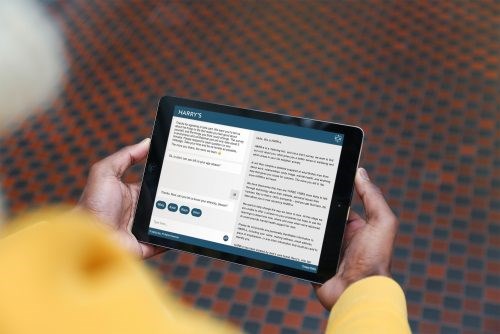How technology can help to manage COVID-19's mental health fallout
Date: Friday 28 Aug 2020
Meeting the increasing demand for mental health services as a result of the pandemic will not be possible using traditional methods.
Despite existing reservations among clinicians, there is now clear evidence for the efficacy of telepsychiatry.
It could become the first phase in a revolution in the way psychiatry is delivered.
By Joseph Hayes

The COVID-19 pandemic has disrupted the way medical care can be provided in an unprecedented manner. In the UK this has required the National Health Service (NHS) to react quickly and adopt telehealth technologies - something to which there has been longstanding resistance.
This resistance existed despite the NHS' long-term plan to “open a digital ‘front door’ to the health service” by allowing patients to access services remotely, despite research suggesting that rolling out digital health technologies could save the NHS £7.5 billion ($9.7 billion) per year, and despite the Topol Review on digital technologies in the NHS, which identified telemedicine, smartphone apps and remote monitoring as NHS priorities.
In psychiatry, the main changes have been the adoption of videoconferencing and telephone support. The familiarity and scalability of these options make them a logical step in providing care where face-to-face contact is high risk.
Whilst newer technologies have much more to offer than these relatively limited options, this adaptation of services represents a step-change in the way clinical care is provided and potentially opens the door to more advanced forms of digital psychiatry in the post-COVID era.
Before COVID-19, telepsychiatry in the UK was limited to small pilots led by particularly innovative teams or mental health trusts (care providers). There is now considerable evidence for telepsychiatry’s clinical efficacy, feasibly, validity, reliability, satisfaction and cost (the Oxford Precision Psychiatry Lab has summarised this literature and provides a clear guide for clinicians practising telepsychiatry).
Research into therapy delivered via telephone suggests that there is minimal difference from face-to-face therapy in terms of the nature of the interaction (therapeutic alliance, empathy, attentiveness, participation and disclosure). It is unclear how this translates to positive outcomes more broadly; however, in many cases, the practical matter of delivering psychiatric care remotely should be simpler than full psychotherapy.

Despite these findings, there has historically been resistance on the part of clinicians to use telepsychiatry because of concerns about rapport, therapeutic alliance, safety and technological limitations, and because of a perceived lack of evidence. As with wider usage of any intervention or change in the way, care is delivered, there needs to be an ongoing appraisal of quality, safety and effectiveness.
In particular, it will be necessary to understand how to optimise its use by different subgroups of patients. There will be patients who potentially cannot engage in this manner, generally those who are most vulnerable, such as individuals with more severe mental illness or chaotic lifestyles, and those with high levels of risk.
Access will also be affected by socioeconomic and age-related factors; this year in the UK only 70% of those over 55 and less than 70% of unemployed individuals and those working in low-grade occupations own a smartphone. Without careful planning, this technological development has the potential to widen inequalities in the provision of healthcare.
Longer-term cost and benefits of telepsychiatry versus traditional care need to be weighed-up, and potential risks need to be fully understood.
These points notwithstanding, telepsychiatry seems likely to be here to stay as an integrated part of mental healthcare in a post-COVID-19 world. The current widespread reliance on this new modality has aided in building clinician and patient trust and emphasised its importance.
It will not be possible to meet the predicted increased demand for mental health services using traditional means.
Already the UK is seeing rapid increases in reported mental health problems, with those who already had the worst mental health, and experienced the worst recent trends prior to the COVID-19 pandemic being hardest hit overall. So novel approaches will be necessary.
Adopting new technologies for the many with less severe care needs has the potential to improve quality for those individuals and free-up face-to-face time for those who cannot engage digitally.

Videoconferencing could be effective in facilitating contact between patients and clinicians from minority groups, strengthening rapport; certain patient groups may prefer the security that comes with remote access to a clinician; people with restricted movement (people living in institutional settings) may have improved access to care.
Beyond basic videoconferencing, telepsychiatry could be augmented by decision support systems, aiding diagnosis and providing treatment options; and applications (wearables, monitoring devices, the internet of things) that allow a clinician to observe changes in a patient's mental state remotely and make contact reactively, potentially preventing mental health crises and quickly responding to treatment non-response or adverse medication effects.
Ultimately, blended approaches of digital and face-to-face contact, guided by patient preference, are likely to be most effective. Amalgamated approaches have the potential to refocus us on the central, often lost, tenets of healthcare: trust, connection and empathy.
Developments in digital psychiatry will allow more patients to have more access to mental health treatments.
Telepsychiatry could potentially be the first phase of a broader revolution in psychiatry; one that allows care to become more preventative, reactive and empathic to the needs of the population via technology.

